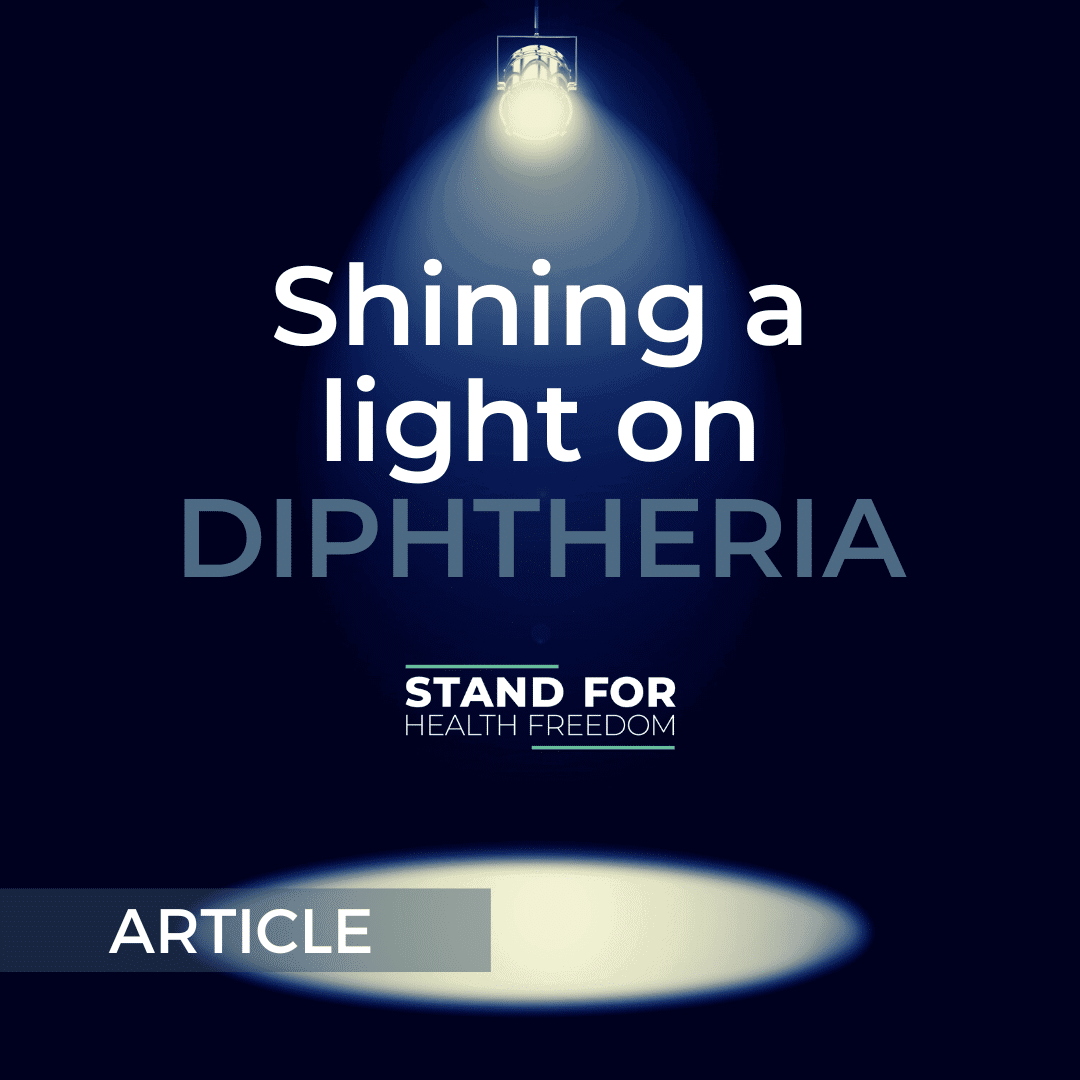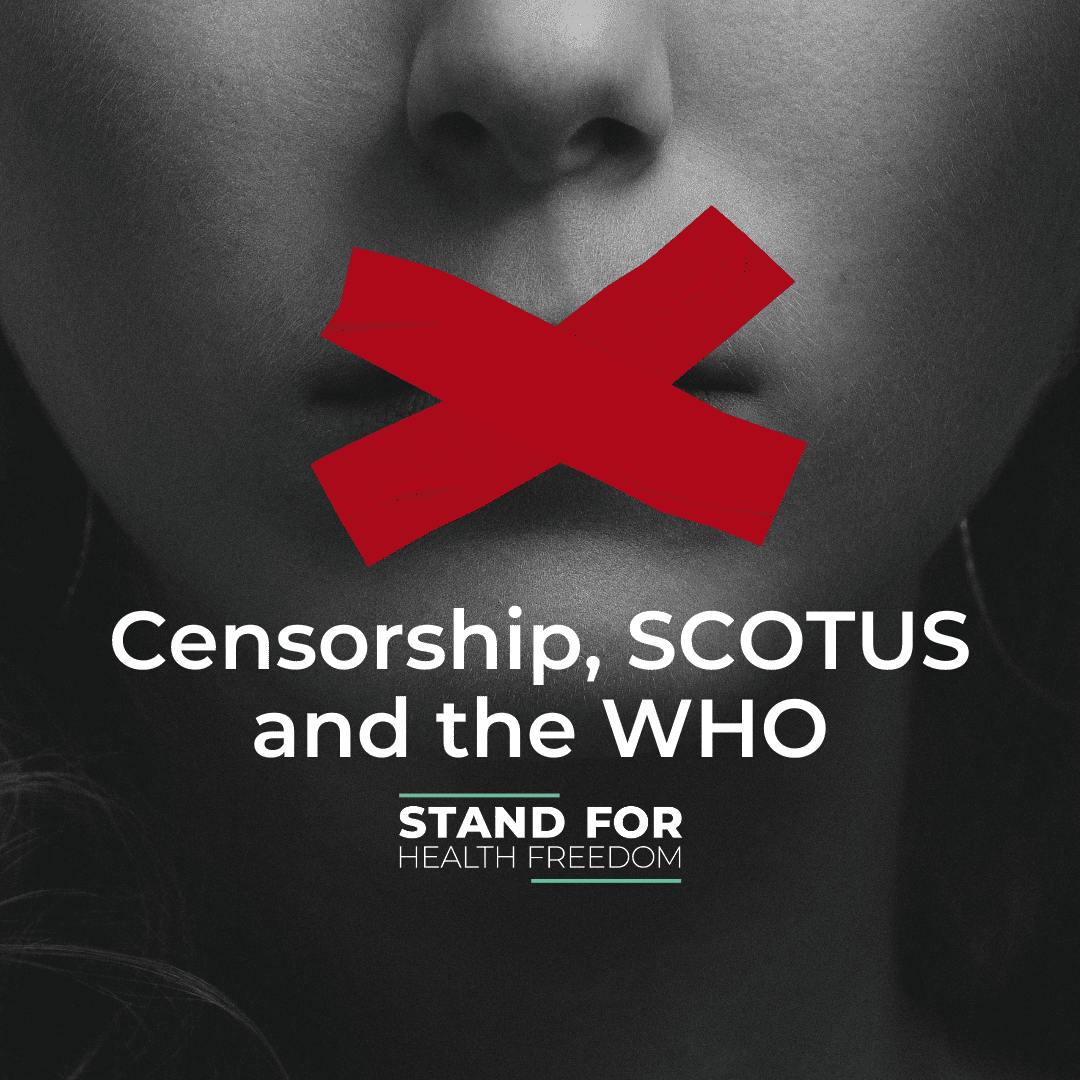Why do we create vaccines for disappearing diseases?
Editor’s note: This article is part of a series telling the stories & policies behind CDC-recommended vaccines. Each disease will be covered in an individual article, with separate articles for combination shots.
What is diphtheria?
Diphtheria is an illness brought on by a toxin given off by a bacterium: Corynebacterium diphtheriae. Symptoms can look like tonsillitis and include sore throat and a rash. More severe cases can lead to myocarditis and death. The disease got its name from its most notable feature: the leathery look of a membrane that grows in the throat, which can stifle air flow. In Greek, the word “diphtheria” means prepared hide or leather.
Many people do not have symptoms even if the bacteria are found in their bodies, and those who are most likely to suffer serious effects or death are children. According to “Turtles All the Way Down,” a book that examines the “science and myth” behind vaccines, some strains of the diphtheria bacteria do not secrete the toxin. And even if the strain does, it can only do so in a body that is depleted in iron.
Literature, public health reports, and news stories for over a century have noted that diphtheria becomes deadly in crowded and unsanitary the conditions. Even after a vaccine was developed, the association is still noted. One of the most well-known and oft-cited outbreaks of diphtheria in modern times happened in Russia in the 1990s. The population was highly vaccinated but also suffering social and political turmoil, which led to high rates of alcoholism and malnourishment, creating conditions where diphtheria could ignite and thrive in the population.
Do diseases disappear because of shots?
In the last decade, the U.S. reported seven cases of diphtheria to the World Health Organization. This is a stark contrast to the hundreds of thousands of cases described in medical literature, newspapers, and epidemiological reports from the early 1900s. This leaves one to wonder what caused the decline in diphtheria cases?
In the early 1900s, diphtheria was considered a leading cause of death in the U.S. and around the globe. Consideration of diphtheria and how to prevent it became part of a new international conversation. The rise in international trade by ship prompted some countries to decide it would be a good idea to have a global consensus on how to handle travel and trade that could spread disease. People were trying to understand how sickness happened, how it spread through communities, and how it could arise in different places around the earth. These International Sanitary Conferences, as they were called, were held from 1851 through 1938 and were the first step on a road to global health surveillance that is now being spearheaded by the World Health Organization.
[/et_pb_text]

Source 1: The Scientific background of the International Sanitary Conferences 1851-1938, publication by the WHO 1975
There was a lot of debate at the sanitary conferences as to whether quarantines worked. Did illness arise from conditions at a particular place, or could it be carried from place to place? This classic disagreement in public health has persisted since the dawn of drugs to treat illness, over 150 years now.
Today we ask, did a disease disappear because a vaccine came on the market to save us, or because of sanitation or other environmental changes? Many people may wonder why we ask that at all, as they’ve been taught there’s a clear correlation between the introduction of vaccines and the disappearance of diseases. This disagreement boils down to the dominance and exclusivity of germ theory over other modalities and interpretations of healing and health. Germ theory sets the stage for vaccines to be a silver bullet in the war on disease.
This is a really difficult question to address because we humans tend to like and adopt ideas that will reinforce our experiences and beliefs, causing less pain than considering something that would challenge them. (This is called confirmation bias.) One of the main jobs of our brain is to protect us from pain, so it’s easy to cling to our existing beliefs.
But the question has been asked for a century: Do vaccines make disease disappear or is it something else? Why has the question persisted for 100 years without a definitive answer? In answering these questions, we must look to history, which is the sea in which medical innovation swims.
Looking back, we can’t help but note the relationship between the decline of the spread of disease and the increase in hygiene, sanitation, less-crowded environments, and effective quarantining of the sick.
What is the role of sanitation and quarantine in disease management?
You can’t find a clearer comparison between vaccines and other approaches in the decline of disease than the book “Dissolving Illusions,” co-authored by Dr. Suzanne Humphries and Roman Bystrianyk.
All that to say, we’ll look at a tiny sample of examples in this article, but for a deep dive on this question, get the book on your shelf.
The authors write:
“Sanitation was not a new concept. In the time of the Old Testament, there were clear-cut biblical rules laid out governing the management and disposal of dangerous human waste and rubbish outside the cities and away from water sources. Greece and Rome also perfected well-regulated public health systems. During the Dark Ages, these ideas simply dropped out of the collective memory in many areas of the world.”
The book cites a 1922 article in the “Journal of the American Medical Association,” by Dr. James Gordon Cumming, which states that “sanitation would eliminate the threat of diphtheria.” The article was titled, “Is the Control of Diphtheria Leading to Eradication?” The doctor argued that eradication would not happen through use of serum, vaccinating the healthy, or quarantining the sick; instead, diphtheria would disappear once people engaged in “mass sanitary protection.” His article was not a fringe theory that happened to find its way into the major journal published by the professional organization designed to help medical doctors rise to dominance in health care in America. It’s one of the best-known examples of the debate about germ theory, which was taking place not just in America, but also around the globe, as we saw reflected in the International Sanitary Conferences.
Nome, Alaska, averted a diphtheria epidemic in 1925 before the vaccine was available
In late January 1925, the town of Nome, Alaska, sounded the alarm over an emerging outbreak of diphtheria. The town’s one doctor initially thought he was dealing with tonsillitis, but when more than one child died with a sore and swollen throat, he feared diphtheria instead. The first cases were among the native Eskimo population, who were noted to not “obey” or stay “under health control.” In 1918, the Eskimos were blamed for spreading the flu across Alaska because they tried to flee the epidemic. According to one account, the 1918 flu, just six years earlier, had wiped out half the town, leaving hundreds of children orphaned. Compounding the fear of another epidemic, the town’s supply of antitoxin (an injectable solution of diphtheria antibodies taken from infected horses – more on this below) was expired and the new shipment hadn’t made it in before the port froze. The town of less than 1,500 people had never seen a diphtheria outbreak, being isolated by icy conditions for about seven months out of the year. Suddenly, the antitoxin was seen as a means of saving the town.
The doctor went to work administering expired antitoxin sparingly, schools and gatherings shut down, the sick were quarantined, and people tended to isolate. Fearing the worst, the town put out the call for more antitoxin.
Nome was not too far from the Arctic Circle, so temperatures could dip beyond 50 degrees Fahrenheit below zero. The only way to reach the town was by dog sled over the harsh terrain. The nearest train station was 674 miles away. Typically, it would take 25 days to mush from the train station to the town. But as the story goes, the serum would only last six days. So, a plan was devised to have a relay of 20 teams of mushers, among them over 200 dogs.
In the meantime, U.S. Congressman Dan Sutherland sent word to Washington, D.C., on January 26, 1925, that his district needed help.

News reports from January 29, 1925, show that the Department of Justice authorized the shipment of 1,100,000 units of antitoxin. But, despite declining threat of disease, Nome Mayor George Maynard requested that the serum be sent by airplane “To Save Young America,” according to a headline on January 31. The Coast Guard deemed the trip too dangerous by sea, due to icy conditions, and both the Army and the Navy believed flight to be too hazardous.
The whole country watched as it seemed the only hope for the town of Nome was the delivery of 300,000 units of antitoxin by 20 brave volunteers and 200 dogs, traveling through whiteout blizzards in subzero temperatures. The train in Nenana was met by the first dog sled team on January 27 to start the heroic and legendary journey.
Newspaper reports from the time relay different numbers of cases and deaths. On the day the sleds started, the Alaska Empire newspaper reported 10 diphtheria cases, including four deaths.
As newspapers across America followed the daily progress of the dog sleds, the Alaska Daily Empire reported on January 31, 1925, that the case count was 22, with five people dead. It was also reported by the town’s doctor and health officer that “quarantine and isolation precautions taken at Nome have been successful in combatting the diphtheria epidemic.” Dr. Welch reported he still had 20,000 doses of antitoxin. These doses had expired, but people who received them recovered anyway.
On February 2, the Alaska Daily Empire headline said there were new cases in the epidemic “raging” in Nome. The article listed one “unofficial” new case and two more over the weekend, reporting the total cases to be 27 with the suspected number of contacts (people who were near those ill) at 100, and no new deaths. The article dramatically described raging storms that were slowing the dog teams bringing antitoxin, saying it was uncertain when they would arrive.
In fact, the dog sled relay reached Nome at 5:30 a.m. that same day. It truly was heroic that Americans risked their lives through some of the harshest conditions known to man to help save a town they did not live in.
Despite the delivery, on February 3, the Nome Board of Health raised the alarm that it was “almost inevitable” that the epidemic would spread to the outskirts of Nome and that a plane should be used to expedite antitoxin. There seemed to be some dispute in Nome about how serious the situation was. The Territorial Commissioner of Health believed the situation was only “potentially dangerous” and there were only two new cases outside of families infected at the outset.
By February 4, the town doctor reported that recovery rates exceeded new cases and the town did not need doses to be sent by airplane. His official count reported was 19 cases, including five deaths, and six full recoveries. Still, he requested half a million units of antitoxin within 10 days by plane, in case the disease started rapidly spreading, and everything else could go by mail (which would take up to four weeks to arrive). The need in the town was no longer considered urgent, so it was not necessary to risk the lives of the pilots nor the supply of antitoxin.
On February 17, 1925, another new shipment of antitoxin was received, the town doctor notified the Public Health Service that all cases of diphtheria had recovered, and there had been no new cases for three days. Headlines on that day declared, “epidemic at Nome is ended.” By one newspaper account, 27 people had been counted as diphtheria cases, but by report of the doctor in town, there were 19. There were five deaths. Two additional children fell ill on February 23, but it was reported “there was no alarm as a few new cases are expected now and then.”
The town did not have a vaccine, but the epidemic was quickly averted.
Looking at the reports from the town health and medical officials who credited quarantine and isolation with combatting the outbreak, which was already “slightly relaxed” before any new serum arrived, one must wonder about the efficacy of the expired serum.
The drama of Nome’s Serum Run gripped the nation
Americans around the country followed this sensational story. This was the roaring 20s — the Jazz Age. Prohibition was in full swing. Many Americans had moved into cities after WWI and the economy was booming. But the trauma of living through a true pandemic was fresh in the minds and hearts of Americans. Remember, the Spanish flu capped off the devastation of WWI with more hardship and death than had been seen in the war. One could imagine that a heroic journey through the wilderness to save a town full of orphaned children from another epidemic during a time before television could easily stir up emotions in the masses!
The lead dog that crossed the finish line bringing the antitoxin to the citizens of Nome became an instant celebrity. A statue of the dog was erected in New York City’s Central Park and dedicated on December 17, 1925. Notably, a group named the Citizens’ Medical Reference Bureau (which fought for health freedom and no medical mandates in the early 1900s) objected to the statue on the grounds that it supported misunderstanding of the value of serum for treating or preventing diphtheria, and one editorial about that noted there was “much medical opinion on both sides” of that issue.

The story of the Serum Run was so compelling it echoes still today. Disney and other studios made movies and shows about it, books have been written, and scientists published the sequence of the hero dog’s genome in 2023. You may have heard that the Iditarod dog sled race in Alaska commemorates the Serum Run, but the creators of the race have set the record straight that it does not, even though there’s overlap in the route. And a separate race called the Norman Vaughn Serum ’25 Run has been used to promote vaccines.
How effective was the vaccine?
Despite the diphtheria vaccine being one of the first developed, a World Health Organization publication noted in 2017: “No controlled clinical trial of the efficacy of the toxoid in preventing diphtheria has ever been conducted.” Further, the WHO cites a 1970 paper that “suggests that diphtheria vaccination prevents symptomatic infections, though it does not prevent carriage or spread of diphtheria.” The report notes that the CDC’s Advisory Committee on Immunization Practices (ACIP) acknowledged the vaccine does not stop transmission in 1991. ACIP has not updated or changed that acknowledgement since the 1991 publication.
In other words, the top health researchers in the world do not know how effective the vaccine is, and it is acknowledged the vaccine does not stop transmission of the disease.
We often hear that certain vaccines were introduced after a large decrease in incidence and mortality of a disease. Diphtheria is in this category. Diphtheria was declared eliminated in the U.S. by the CDC in 2009. Because the bacteria can be found in humans and they cause no harm, and because the vaccine does not prevent transmission, diphtheria can never become extinct. Further, if the vaccine does not stop transmission, there can never be “herd immunity.”
The authors of “Turtles” explore the relationship between diphtheria outbreaks and whether a population was able to both isolate and use antibiotics. The vaccine cannot stop transmission, but antibiotics and isolation can. Note that eliminated and eradicated are different. In general terms, “eliminated” indicates that a disease isn’t found in a geographic area unless an outsider brings it in. The term ”eradicated is used when there are zero infections worldwide. A disease is extinct only if it is nowhere on the globe, including in a laboratory.
We could look at statistics all day long and still have arguments about the role vaccines have played in decline of disease. Or we could look simply to the fact that the diphtheria vaccine, despite being one of the world’s first vaccines, has unknown and disputed efficacy, and is acknowledged even by those doctors and scientists who recommend it to be unable to stop transmission of the disease.
When deciding on whether to use a medical intervention, we examine the benefits and risks. Efficacy is a discussion of the benefit part of the analysis. What about the risk?
How safe were the vaccines?
Today, people around the globe are injecting the diphtheria vaccine as part of a combination shot, which changes the safety analysis. The combo shot will be discussed in an upcoming article.

Source 2: The Cordova Daily Times (Cordova, Alaska) · Sat, Jul 1, 1922 · Page 6
As the world waited for scientists to create a safer vaccine, people continued to use sanitation, quarantine, and the antitoxin when available, as we saw in Nome, Alaska.
World War I was over, but the U.S. military did not sleep. Leaders were learning from their experiences in combat and working to prepare for whatever threat was next. Disease knew no borders, so being able to control the toll of illness and death from sickness was a military research priority. If Americans could keep their numbers strong and unaffected by disease, they would have military advantage in any conflict. So, the military made it a priority to do, or to fund, emerging research into vaccines.
Antitoxin
An antitoxin (otherwise known as serum) was developed using blood from animals — mostly horses. The serum itself was known to be risky, just as tetanus antitoxin was, which many doctors and scientists attributed to the fact that it was grown in animals and transferred to humans. There was an associated decline in incidence and fatality of the disease, but also a new surge in something called “serum sickness,” which today would be reportable to VAERS as an adverse event. People who were given antitoxin serum frequently suffered seizures, fevers, malaise, or even death within hours, days, or weeks of the administration. In fact, in 1901, 11 children were inoculated with diphtheria antitoxin that was contaminated and 10 died. This incident, along with others around the country where people died due to contaminated vaccines, spurred the first federal law to regulate these types of products, the Biologics Control Act, passed in 1902.
The difference between an antitoxin and a vaccine is that the antitoxin is made by stimulating horses to produce antibodies. The antibodies are then taken from the horse and transferred into human bodies. Vaccines use an “inactivated” or weakened form of the disease-causing agent, referred to as a toxoid when we’re talking about bacteria.
The ”passive” immunity of antitoxins, created by passing antibodies from horses to people, laid the groundwork for the science of vaccines with hopes of directly injecting altered disease-causing agents that would walk the line of stimulating an immune response while not causing disease or harm on its own.
The creation of the diphtheria vaccine followed the same path as the tetanus vaccine. It continued to be available through the 1930s, but there are conflicting reports of how much it was used. There’s a general consensus, however, that by the 1940s, when diphtheria, tetanus, and pertussis (whooping cough) vaccines were combined, diphtheria started on the path of routine use in children.
Conclusion
The world was changing at lot at the beginning of the 1900s. People were living through wars fought with technologies they’d never imagined, as well as the trauma of a devastating pandemic. Since the turn of the 20th century seems to parallel the turn of the 21st, we can all imagine the anxiety, the fear, and the desire for peace to return that was simmering through society. The military wanted a magic bullet to stop the devastation of disease in combat conditions, and all the hopes of the world were riding on the development of vaccines. But science and health were more than the quick-and-dirty, one-size-fits-all approaches — Americans were also upgrading sanitation systems in cities, improving hygiene, and learning to listen to the needs of the body from a variety of health practitioners.
We now have a century’s worth of vaccine use to examine. What has worked and what hasn’t? Do we know how effective the vaccines are at stopping transmission to create herd immunity? If not, why haven’t those studies been published yet?
With a century of information, we should also be able to look at the long-term effects of vaccination. Have those studies been done? Even if, for the sake of argument, we want to believe that a vaccine eliminated diphtheria in the U.S., what was the cost? Do we have healthier children?
In the next installment of this series, we will shine a light on the combination vaccine that includes diphtheria, tetanus, and pertussis.
Steps you can take
Step One: Keep the spotlight on free speech. Our U.S. House of Representatives is exposing the corruption that ran rampant in COVID policy. Our petition to support them in their fight to protect speech (and, by proxy, informed consent) is at 16,899 signatures at publication of this article. Can you help us make it to 20,000 to let our lawmakers know we are standing with them? Please sign and share!
Step Two: We at Stand for Health Freedom are so grateful to be able to bring you content and action items that can help America protect health freedom. But we can’t do it without you. Please consider a donation so we can ramp up and amplify the health freedom message! Your dollars will fund the shots series like you read above, a new podcast, and boots on the ground to protect health freedom at home in individual states (which is where health decisions should stay). Thank you! (Pssst — sharing is free! Please share our work widely to keep shining a light on health freedom.)
References and sources
- Holland, M., & O’Toole, Z. (Eds.). (2022). Page 327. In Turtles all the way down: Vaccine science and myth. essay, The Turtles Team.
- MD, H. S., & Bystrianyk, R. (2015). Dissolving illusions: Disease, vaccines and the forgotten history
- https://www.cdc.gov/vaccines/pubs/surv-manual/chpt01-dip.html
- https://aramink.com/2007/07/28/the-nome-serum-run-true-heroes-in-a-legendary-race-against-time-and-tragedy/
- https://www.grunge.com/346502/the-true-story-behind-the-1925-nome-serum-run/
- https://iditarod.com/edu/misconceptions-and-more-iditarod-the-serum-run/
- https://cdn.who.int/media/docs/default-source/immunization/sage/2017/sage-meeting-of-april-2017/background-docs/session-diphtheria/2.-systematic-review-on-diphtheria-vaccine-effectiveness-and-immunogenicity-pdf-679kb.pdf?sfvrsn=8715ed00_3
- https://cdn.who.int/media/docs/default-source/immunization/sage/2017/sage-meeting-of-april-2017/background-docs/session-diphtheria/2.-systematic-review-on-diphtheria-vaccine-effectiveness-and-immunogenicity-pdf-679kb.pdf?sfvrsn=8715ed00_3
- https://www.cdc.gov/mmwr/preview/mmwrhtml/su48a7.htm
- https://www.usp.org/sites/default/files/fda-exhibit/legislation/1902.html
- Airplane may take antitoxin to Nome city. (1925, January 29). Alaska Daily Empire.
- Another case reported; requests airplane. (1925, January 31). Alaska Daily Empire.
- Antitoxin dog carriers held up by storms. (1925, February 2). Alaska Daily Empire.
- Ask Gov. Bone to authorize plane flight. (1925, February 3). Alaska Daily Empire.
- Doctors strain at gnat. (1925, April 14). Alaska Daily Empire.
- Dog team is making great time to Nome. (1925, January 31). Alaska Daily Empire.
- Dog teams in race to Nome with medicine. (1925, January 28). Alaska Daily Empire.
- Epidemic at Nome is ended. (1925, February 17). Alaska Daily Empire.
- Mayor Maynard sends appeal for quick aid. (1925, January 30). Alaska Daily Empire.
- Nome census. (1925, June 6). Alaska Daily Empire.
- Quarantine at Nome is lifted. (1925, February 23). Alaska Daily Empire.
- Serum aboard admiral liner bound for Nome. (1925, February 4). Alaska Daily Empire.





